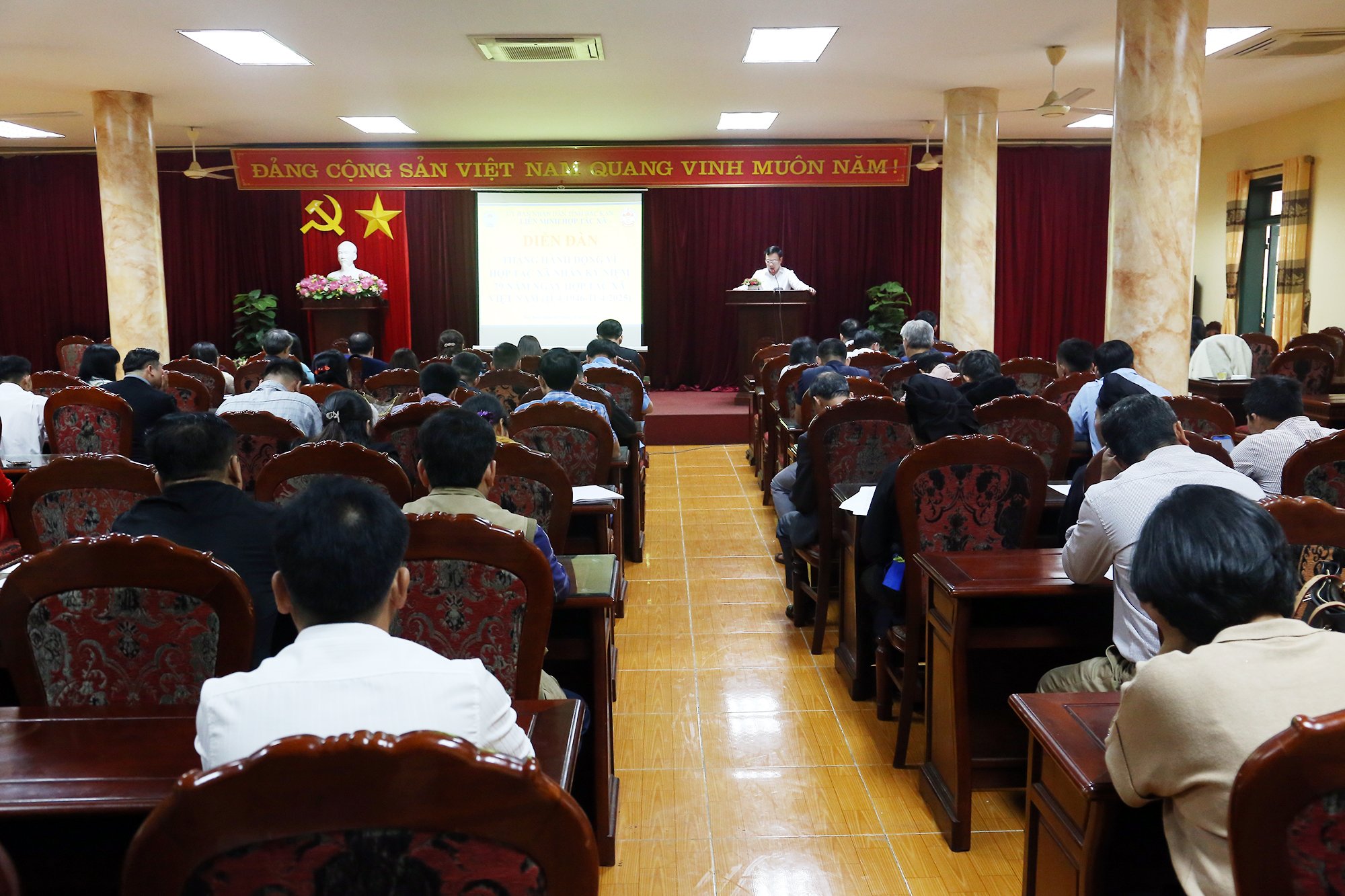Medical news on July 19: How dangerous is aortic dissection?
Aortic dissection is a rare disease (rate 5-30/1,000,000) but very dangerous (if not treated, the mortality rate is up to 50% within the first 48 hours of onset).
When to perform aortic dissection
Mr. Ph., 40 years old, was driving when he had severe back pain. After many clinical tests, the doctor discovered that it was a rare condition called aortic dissection.
 |
| The risk of aortic dissection can be reduced by modifying risk factors such as lowering blood pressure to a target of 120/80 mmHg. |
Previously, Mr. Ph. (with an address in Hoc Mon district, Ho Chi Minh City) was taken to a hospital near his home with pain between his shoulder blades, spreading to the front of his chest between his sternum and arms.
The pain gradually increased, accompanied by sweating and dizziness. He was given emergency care for several hours but did not improve, so he was transferred to the hospital.
Doctor Nguyen Thi Le Chi, Department of Cardiology 1, Cardiology Center, Tam Anh General Hospital, Ho Chi Minh City, said that the patient's blood pressure was very high at the time of admission (219/103 mmHg), while he had no history of high blood pressure. He was given antihypertensive medication, and his blood pressure dropped to 180/100 mmHg, but he still had severe back pain.
Bedside echocardiography and aorta showed good cardiac contractions, no heart valve damage, no pericardial effusion; the aorta was not dilated but it was difficult to examine for signs of dissection due to the thick chest wall.
Electrocardiogram and cardiac enzyme tests showed no signs of acute myocardial infarction. Chest X-ray showed no pneumothorax, no enlarged heart, and mild dilation of the aortic arch. The emergency room doctor suspected the pain was related to the spine and ordered an MRI of the spine, which showed degenerative thoracic spine disease.
Mr. Ph. was transferred to the Cardiology Department, Cardiovascular Center due to an urgent hypertensive crisis. The doctor gave him painkillers.
Dr. Huynh Thanh Kieu, Head of Cardiology Department 1, Cardiovascular Center, Tam Anh General Hospital, Ho Chi Minh City, ordered cardiovascular tests. The results showed that the D-dimer index (which helps assess the condition of blood clots in blood vessels) increased 13 times higher than normal people, suggesting vascular-related diseases such as pulmonary embolism or aortic dissection.
The results later showed that the aorta had dissected a segment extending from the left subclavian artery to the left common iliac artery, narrowing the blood vessels supplying the kidneys. This was the reason why the patient's blood pressure could not be reduced despite intensive treatment for many hours.
Transthoracic ultrasound images are difficult to accurately assess the aorta because the aorta lies deep behind other structures in the chest, especially difficult to observe in patients with thick chest walls like Mr. Phan.
This can easily cause doctors to miss the pathology related to aortic dissection. If not based on the extremely high D-dimer index and experience in diagnosing many similar cases, doctors will not suspect aortic dissection and quickly perform a CT scan, unable to find an effective treatment plan for the patient.
Aortic dissection occurs suddenly when the intima is torn, causing blood to flow less in the true lumen and instead into a false lumen, located between the intima and the media. At this time, blood flow to parts of the body is slowed or blocked. At the same time, the aortic wall becomes weaker and is at risk of rupture, causing death.
Fortunately, Mr. Phan's aortic dissection has not caused complications of organ hypoperfusion, so there is no indication for stent graft placement.
The patient was treated with medication to control blood pressure and heart rate via intravenous infusion. After one day, his chest pain and back pain were gone, his blood pressure was stable at 117/65 mmHg, his heart rate was 70 beats/minute, and his vital signs were closely monitored and evaluated to promptly detect damage to internal organs.
Doctor Kieu informed that aortic dissection is a rare disease (rate 5-30/1,000,000) but very dangerous (if not treated, the mortality rate is up to 50% within the first 48 hours of onset).
The disease can lead to serious complications: death from massive internal bleeding; organ damage, such as kidney failure or life-threatening intestinal necrosis; stroke; damage to the aortic valve (acute aortic regurgitation) or hemopericardium causing acute cardiac tamponade.
Treatment of aortic dissection depends on the location of the tear and the type of dissection, including medical treatment, surgical replacement of the graft, endovascular stent graft placement, and combined surgery and stent graft placement. After intervention, patients need to be monitored for life to detect complications early.
The risk of aortic dissection can be reduced by changing risk factors such as lowering blood pressure to a target of 120/80 mmHg with medication, changing diet, exercising regularly, controlling stress, avoiding being overweight or obese, not smoking, avoiding accidents that cause chest trauma, and having regular health check-ups or when there are unusual signs.
Reduce the rate of malnutrition in children under 5 years old
In the first 6 months of 2024, intervention activities to reduce the rate of children under 5 years old were implemented by the health sector.
The Department of Health and the Department of Education and Training are implementing an intervention model to prevent overweight and obesity in a number of primary schools in Hanoi, in the period of 2023-2025, initially at La Thanh Primary School (Dong Da district), Nguyen Du Primary School (Hoan Kiem district), and Le Loi Primary School (Ha Dong district).
Recently, the health sector has conducted a survey on knowledge and practice of nutrition and exercise for students at the three primary schools mentioned above. The results of the review showed that 1,460 children were overweight and obese.
Based on the review and statistics through the investigation, the health sector will coordinate with the education sector to propose intervention solutions to gradually reduce the situation of overweight and obese children.
The first phase of the Vitamin A supplementation campaign and Micronutrient Day activities in the city such as weighing and measuring the nutritional status of children under 5 years old were organized in early June. The whole city has 1,665 drinking points and 379,495/379,904 children aged 6-35 months have been given high-dose Vitamin A supplements, reaching a rate of 99.89%.
Regarding weighing and measuring the rate of malnourished children, 591,211 children under 5 years old were weighed and measured, reaching a rate of 95.07%. The result was that the rate of underweight malnutrition was 6.6% and stunting was 9.8%, meeting the city's assigned target.
Intervention activities to reduce the rate of malnutrition in children under 5 years old will continue to be implemented by the health sector in the coming time, which is to investigate and assess the nutritional status of children under 5 years old and mothers with children under 5 years old in 60 clusters in the city.
Conduct communication in the community, at factories, enterprises, and industrial parks about nutrition in the first 1000 days of life, nutrition for children aged 2-5 years old; organize the second Vitamin A supplementation campaign in 2024...
It is known that overweight and obesity cause many negative consequences for children's health, affecting their physical and intellectual development, increasing the risk of non-communicable diseases in adulthood. Overweight and obese children not only make them feel inferior and self-conscious, but also create great pressure on their parents, who are the direct caregivers. There are children who are overweight and obese and become withdrawn and depressed.
The results of a survey of 5,028 students at 75 schools in Hanoi, Ho Chi Minh City, Thai Nguyen, Nghe An, and Soc Trang showed that the rate of overweight and obesity among primary school students in both rural and urban areas was 29%; the rate of overweight and obesity among students in urban areas was higher than that in rural areas (41.9% and 17.8%).
In particular, the survey results of 5th grade students in some districts of Hanoi, conducted in 2023, showed that the number of overweight and obese children in many schools in the inner city area is over 45%. There are schools with very high rates such as Le Loi Primary School (Ha Dong District) at 49.5%; Tran Nhat Duat Primary School (Hoan Kiem District) at 51.4%; La Thanh Primary School (Dong Da District) at 55.7%...


![[Photo] Phuc Tho mulberry season – Sweet fruit from green agriculture](https://vstatic.vietnam.vn/vietnam/resource/IMAGE/2025/4/10/1710a51d63c84a5a92de1b9b4caaf3e5)


![[Photo] Prime Minister Pham Minh Chinh chairs meeting to discuss tax solutions for Vietnam's import and export goods](https://vstatic.vietnam.vn/vietnam/resource/IMAGE/2025/4/10/19b9ed81ca2940b79fb8a0b9ccef539a)

![[Photo] Unique folk games at Chuong Village Festival](https://vstatic.vietnam.vn/vietnam/resource/IMAGE/2025/4/10/cff805a06fdd443b9474c017f98075a4)




















































































Comment (0)